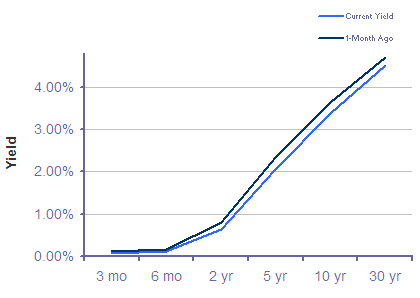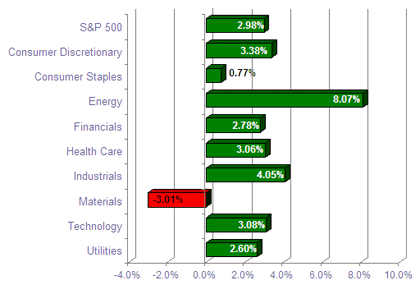
Market Commentary by Scott J. Brown, Ph.D., Chief Economist

The economic calendar was thin. Retail sales rose about as anticipated in February, but January figures were revised higher. The trade deficit widened sharply in January, suggesting that net exports may make a significant subtraction from Q111 GDP growth. Claims for unemployment insurance rose, but seasonal adjustment made the figures questionable (the underlying trend is down). Consumer sentiment sank in the mid-month reading for March, with a sharp plunge in expectations for the next six months and a pickup in inflation expectations – this was the first economic report that could reflect the recent surge in gasoline prices, and the results were not good.
Oil prices retreated, but remained a considerable worry for U.S. equity market participants. Libya tilted toward civil war. Moody’s downgraded Spanish debt. A major earthquake hit Japan.
Next week, the economic data bunch up in the middle of the week. The focus will be on the inflation reports, but these releases are not likely to capture much of the impact of the late-month surge in oil prices. The Federal Open Market Committee is expected to leave short-term interest rates steady and retain its conditional commitment to keep rates low for “an extended period.” The wording of the Fed’s economic outlook should be a little more cautious, but still optimistic. The FOMC may give some indication of whether it will taper down its purchases of long-term Treasuries in June or quit cold turkey. The current Continuing Resolution to fund the government expires on Friday and the two political parties remain far apart, but we should see another continuing resolution to fund the government for another two or three weeks.
Indices
| Last | Last Week | YTD return % | |
| DJIA | 11984.61 | 12258.20 | 3.52% |
| NASDAQ | 2701.02 | 2798.74 | 1.82% |
| S&P 500 | 1295.11 | 1330.97 | 2.98% |
| MSCI EAFE | 1694.76 | 1743.22 | 2.20% |
| Russell 2000 | 799.53 | 828.89 | 2.03% |
Consumer Money Rates
| Last | 1-year ago | |
| Prime Rate | 3.25 | 3.25 |
| Fed Funds | 0.15 | 0.16 |
| 30-year mortgage | 4.82 | 5.01 |
Currencies
| Last | 1-year ago | |
| Dollars per British Pound | 1.606 | 1.496 |
| Dollars per Euro | 1.382 | 1.365 |
| Japanese Yen per Dollar | 82.990 | 90.540 |
| Canadian Dollars per Dollar | 0.975 | 1.026 |
| Mexican Peso per Dollar | 11.951 | 12.619 |
Commodities
| Last | 1-year ago | |
| Crude Oil | 102.70 | 82.09 |
| Gold | 1407.80 | 1109.05 |
Bond Rates
| Last | 1-month ago | |
| 2-year treasury | 0.64 | 0.80 |
| 10-year treasury | 3.38 | 3.64 |
| 10-year municipal (TEY) | 4.88 | 5.51 |
Treasury Yield Curve – 3/11/2011

S&P Sector Performance (YTD) – 3/11/2011

Economic Calendar
| March 13th | — | Daylight Savings Time Begins |
| March 15th | — | Import Prices (February) Empire State Manufacturing Index (March) Homebuilder Sentiment (March) FOMC Meeting |
| March 16th | — | Producer Price Index (February) Building Permits, Housing Starts (February) |
| March 17th | — | Jobless Claims (week ending March 12th) Consumer Price Index (February) Industrial Production (February) Philadelphia Fed Index (March) Leading Economic Indicators (February) |
| March 21st | — | Existing Home Sales (February) |
| March 23rd | — | New Home Sales (February) |
| March 24th | — | Durable Goods Orders (February) |
| March 29th | — | Consumer Confidence (March) |
| April 1st | — | Employment Report (March) |
Important Disclosures
Past performance is not a guarantee of future results. There are special risks involved with global investing related to market and currency fluctuations, economic and political instability, and different financial accounting standards. The above material has been obtained from sources considered reliable, but we do not guarantee that it is accurate or complete. There is no assurance that any trends mentioned will continue in the future. While interest on municipal bonds is generally exempt from federal income tax, it may be subject to the federal alternative minimum tax, state or local taxes. In addition, certain municipal bonds (such as Build America Bonds) are issued without a federal tax exemption, which subjects the related interest income to federal income tax. Investing involves risk and investors may incur a profit or a loss.
US government bonds and treasury bills are guaranteed by the US government and, if held to maturity, offer a fixed rate of return and guaranteed principal value. US government bonds are issued and guaranteed as to the timely payment of principal and interest by the federal government. Treasury bills are certificates reflecting short-term (less than one year) obligations of the US government.
Commodities trading is generally considered speculative because of the significant potential for investment loss. Markets for commodities are likely to be volatile and there may be sharp price fluctuations even during periods when prices overall are rising. Specific sector investing can be subject to different and greater risks than more diversified investments.
Tax Equiv Muni yields (TEY) assume a 35% tax rate on triple-A rated, tax-exempt insured revenue bonds.
![]() Material prepared by Raymond James for use by its financial advisors.
Material prepared by Raymond James for use by its financial advisors.
The information contained herein has been obtained from sources considered reliable, but we do not guarantee that the foregoing material is accurate or complete. Data source: Bloomberg, as of close of business March 3th, 2011.
©2011 Raymond James Financial Services, Inc. member FINRA / SIPC.


